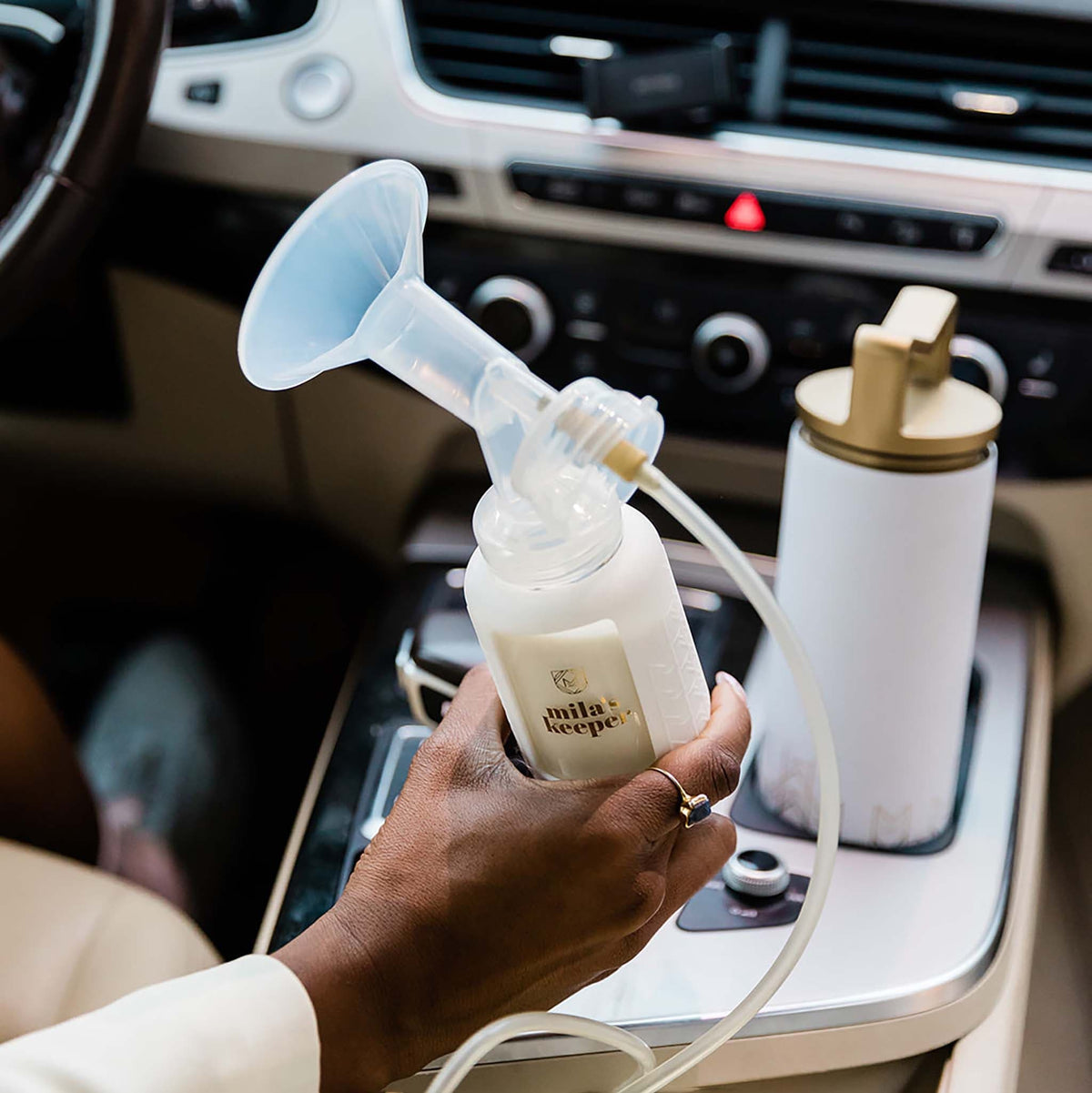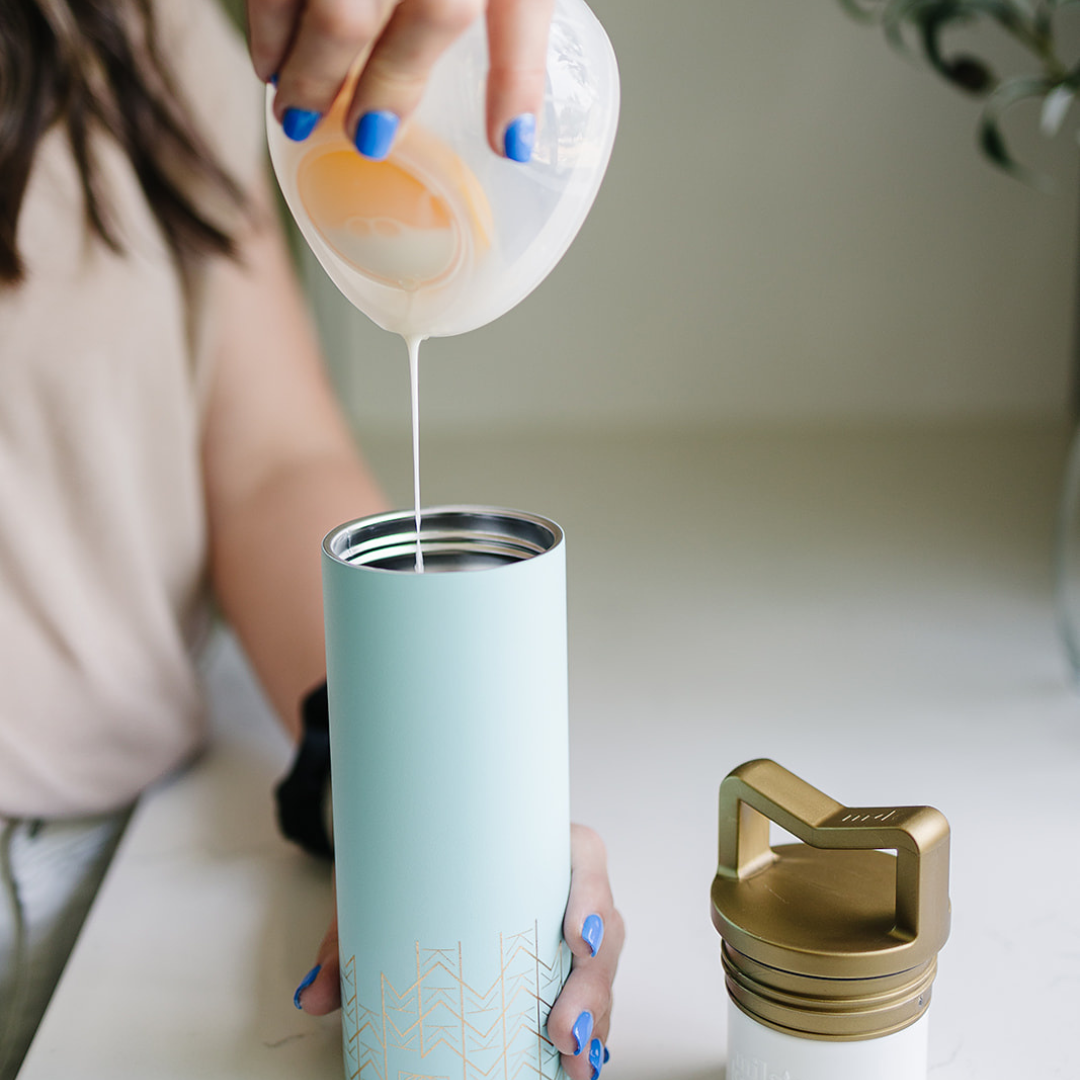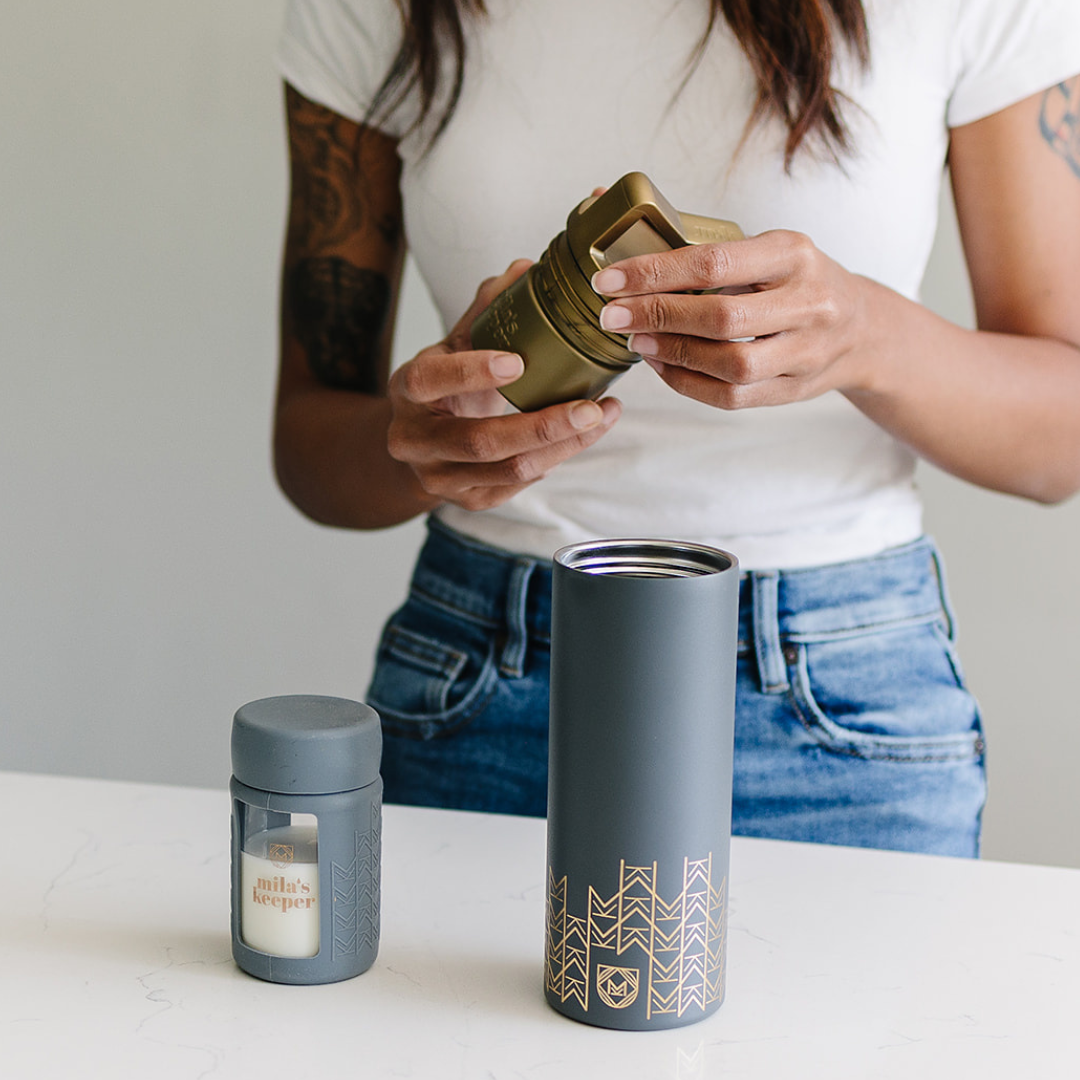My name is Lara and I am a global health professional, a certified lactation educator, and an active, globetrotting mama. This is my story about how Mila’s Keeper was born from a failed UNICEF project and my personal experiences as a working, breastfeeding mom.
In 2014, I was heading up our UNICEF office in Ho Chi Minh City, the bustling commercial capital of Vietnam. We partnered with the largest private employer in the country to help them become breastfeeding/ pumping-friendly for its whopping 90,000+ female employees. They previously implemented a breastfeeding program before, but it failed. So when we came on board to help, they were understandably wary but enthusiastic about getting expert support.
First we learned that they had created a designated lactation room but no one came to use it. Given the size of the company, it was obvious that the location of the room was too far and inconvenient for moms to use on their limited pump breaks. So we discussed and agreed upon more convenient locations.
We also knew that the single, manual pump that most moms could afford, would not be realistic to use in the work setting, given the physical hardship as well as the limited break times. So we resolved that by having discussions with an electric pump manufacturer which said they could donate personal tubes that could be used with donated electric pumps shared by the community.
We also knew that we might need to convince the company to extend their pump break times and they were open to that. As we continued down the pathway of getting closer to a more viable solution, we ran into a roadblock, one that would ultimately lead to the downfall of the project.
We needed a scalable solution to help moms keep their breastmilk cold throughout their 12 hour commute and workday. Current solutions of mediocre ice packs in ineffective, insulated bags would not endure the 12 hours they needed for safe storage. Buying refrigerators to serve all of its 110,000 employees was unfortunately not financially nor logistically feasible for the company. We also found that moms were not comfortable leaving their breast milk in community refrigerators so culturally it would have been another barrier to break. As a result, moms were left without a cold storage solution, and our project ended without resolution.
When I returned to the US - this issue always persisted in my mind, but I considered it an issue that was only relevant in emerging and developing countries. While being home in the US however, I realized that exclusive breastfeeding rates in the US were actually quite low, and worse than many developing countries. The reasons for low rates were related to the large number of moms we have in our workforce, coupled with the lack of basic benefits like maternity leave and pump breaks that are lacking in the US.
In fact, UNICEF in 2012 helped Vietnam pass a groundbreaking 6-month maternity leave law to help support moms reach the recommended goal of 6-month exclusive breastfeeding. In the US, we are the only industrialized country without a federally mandated maternity leave policy. We have disability insurance (which I also find offensive by name!) to serve as leave with reduced pay. Only 10% of the working female population, however, is eligible since it is in effect only if you work for large employers and have been working full-time for one full year. So to my bewildered amazement as a global health professional, I realized that American women actually need more support than those in most of the other 28 countries I have worked in when it comes to breastfeeding!!
In addition, from my own personal breastfeeding experience, there was one thing that really stood out for me: the tremendous personal pressure I felt to breastfeed. Practically nothing came in the first two weeks which induced lots of crying and despair. When it finally did come in, I had hugely, painful clogged ducts that burned so badly I can almost relive it now . I felt like a complete failure to my husband, work colleagues, and of course to my baby when I realized that breastfeeding didn’t come naturally for me. Looking back, I realized that these pressures did not originate only from my own expectations, but perhaps from a society that always preached “breast is best”. As a health professional, I fully, 100% advocate the importance and value of breastfeeding or breast milk, but at the same time, as a mother, I also realized how devastating it can feel if you are unable to do so for ANY reason.
The combination of experiencing the rooted pressures from societal expectations of breastfeeding with the lack of support for women to do so in the US, literally made me explode with exasperation and motivation. I knew that I needed to do something to help change this situation, even if my contribution would be ever so small. So once this passion was ignited, the journey of building Mila’s Keeper was started.
Learning from our pitfalls from the UNICEF project, we knew first and foremost that we had to develop a breast milk cooler that could successfully endure a long commute and workday. Secondly, we prioritized building a fully portable and standalone unit, which could be kept safely in mom’s desk or purse, not in a community refrigerator. And finally, we also focused on making sure it was sustainable and built to be reused beyond a mom’s breastfeeding journey, whether it be 2 weeks or 2 years!
As a result, our focused effort landed on a modern breast milk cooler storage solution that will last 18 hours, and in most test cases, well over 24 hours! While we know our products are great, Mila’s Keeper actually embodies much more than just physical products. We exist because we want to connect with others, sharing and helping others who have similar experiences. We want to learn from other moms and experts, and I am committed to sharing my own experiences because knowledge is power.
In fact, much of what we value is embedded in our namesake. Mila’s Keeper gets its name from Mila, a name I chose for a daughter that I never got (but I did get two beautiful sons!). Mila represents the strong, courageous girl that I would have raised and would do everything in my power to support so that she could thrive in this crazy, challenging world. Did anyone also ever watch The Fifth Element? I just always thought Milla Jocavich played an inspiring (and gorgeous) badass character in that movie!
The word “Keeper,” represented by the shield in the logo, has the literal meaning of keeping milk safe, but more importantly, it symbolizes the guardian, the defender, and the protector of Mila’s rights as a girl and a woman to have the opportunity to be everything she wants to be in life. Mila’s Keeper represents the importance of individuality, thriving as a mom; and the power behind our community to defend the rights of all women and girls around the world.
It is my hope that Mila’s Keeper will do all of this and more for you and your family. Thank you for embarking on this journey with us. We can’t wait to learn so much more from all of you.























